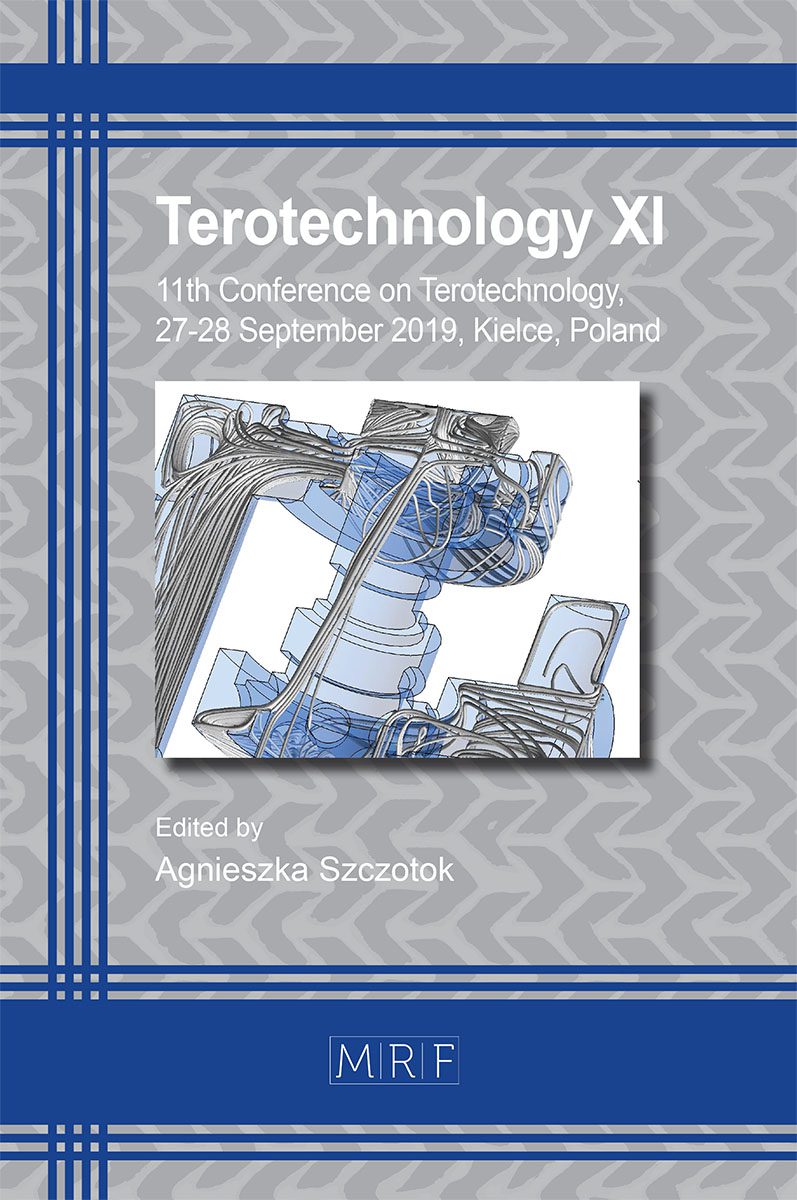Influence of Irradiance Level on the Toxic Gases Emission During the Combustion of Materials used in Floor Constructions in Rolling Stock
MILCZAREK Danuta and DUSZYNSKA-ZAWADA Patrycja
download PDFAbstract. This article presents the results of studies on the influence of irradiance level on the thermal decomposition of a non-metal materials used in floor constructions in rolling stock. This paper contains an analysis of emitted products of combustion and their evolution rate during the potential fire of railway vehicles. The irradiance level of the most intense individual gas emissions was determined, which allowed estimating the safe evacuation time of passengers and staff.
Keywords
Fire Tests of Railway Materials, Fire Safety, Fire Behavior, Test Methods, Toxicity, FTIR, Rail Vehicles, Heat Radiation Intensity
Published online , 7 pages
Copyright © 2020 by the author(s)
Published under license by Materials Research Forum LLC., Millersville PA, USA
Citation: MILCZAREK Danuta and DUSZYNSKA-ZAWADA Patrycja, Influence of Irradiance Level on the Toxic Gases Emission During the Combustion of Materials used in Floor Constructions in Rolling Stock, Materials Research Proceedings, Vol. 17, pp 211-217, 2020
DOI: https://doi.org/10.21741/9781644901038-31
The article was published as article 31 of the book Terotechnology XI
![]() Content from this work may be used under the terms of the Creative Commons Attribution 3.0 licence. Any further distribution of this work must maintain attribution to the author(s) and the title of the work, journal citation and DOI.
Content from this work may be used under the terms of the Creative Commons Attribution 3.0 licence. Any further distribution of this work must maintain attribution to the author(s) and the title of the work, journal citation and DOI.
References
[1] J. Radziszewska-Wolińska, D. Milczarek, Fire Tests of Non-Metallic Materials for Walls and Ceiling in Rolling Stock, Material Research Proceedings 5 (2018) 90-95. https://doi.org/10.21741/9781945291814-16
[2] J. Radziszewska-Wolińska, A. Kaźmierczak, Fire Properties of Upholstery and Fire Resistance of the Complete Passenger Seat, Material Research Proceedings 5 (2018) 31-36. https://doi.org/10.21741/9781945291814-6
[3] J. Radziszewska-Wolińska, Selection of Components of Upholstery Systems, Material Research Proceedings 5 (2018) 142-147. https://doi.org/10.21741/9781945291814-25
[4] J. Radziszewska-Wolińska, I. Tarka,The Influence of Reinforcing Layers and Varnish Coatings on the Smoke Properties of Laminates Based on Selected Vinyl Ester and Polyester Resins Material Research Proceedings 5 (2018) 210-215.
[5] D. Riegert, Sposoby modyfikowania właściwości palnych tworzyw sztucznych, Bezpieczeństwo i Technika Pożarnicza 30 (2) (2013) 51-57.
[6] W. Zatorski, K. Sałasińska, Combustibility studies of unsaturated polyester resins modified by nanoparticles, Polimery 11-12 (2016) 815-823. https://doi.org/10.14314/polimery.2016.815
[7] J. Radziszewska-Wolińska, D. Milczarek, Uniepalnienie materiałów niemetalowych a ich właściwości funkcjonalne, TTS Technika Transportu Szynowego 11-12 (2012) 56-59
[8] Z. Kęcki, Podstawy spektrofotometrii molekularnej, PWN, Warszawa, 1998.
[9] PN-EN 45545-2+A1:2015 Railway applications – Fire protection on railway vehicles – Part 2: Requirements for fire behaviour of materials and components
[10] ISO 19702:2015 Toxicity testing of fire effluents. Guidance for analysis of gases and vapours in fire effluents using FTIR gas analysis
[11] PN EN 17084:2019 Railway applications. Fire protection on railway vehicels. Toxicity test of materials and components
[12] PN-EN ISO 5659-2:2017-08 Plastics – Smoke generation – Part 2: Determination of optical density by a single-chamber test
[13] COMMISSION REGULATION (EU) No 1302/2014 of 18 November 2014 concerning a technical specification for interoperability relating to the ‘rolling stock — locomotives and passenger rolling stock’ subsystem of the rail system in the European Union































